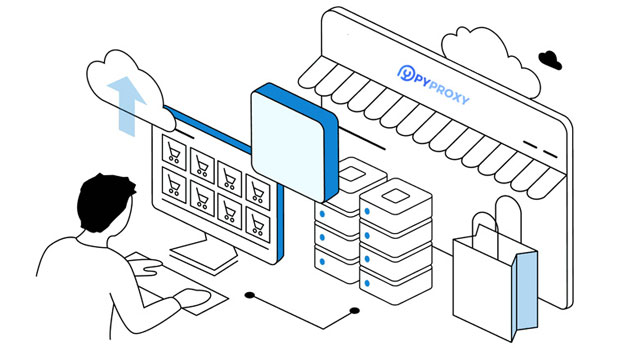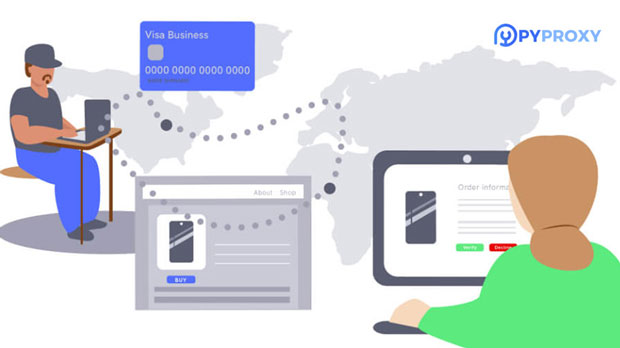What is the difference in browsing speed between SOCKS5 proxy and HTTP proxy?
When considering different types of proxies, SOCKS5 and HTTP proxies are commonly discussed, especially in terms of their impact on browsing speed. Although both serve as intermediaries between a user and the internet, they differ significantly in how they handle data transmission, which can lead to differences in browsing performance. SOCKS5 is generally more flexible and capable of handling a wider range of internet traffic, making it a more versatile option for certain use cases, while HTTP proxies are typically optimized for web traffic and can be faster for specific browsing activities. In this article, we will explore the key distinctions between these two types of proxies, focusing particularly on their effects on browsing speed, and provide insights into which might be more efficient for different online activities. Understanding socks5 proxySOCKS5, the latest version of the SOCKS protocol, is a general-purpose proxy that can handle a variety of internet protocols, including HTTP, FTP, and even peer-to-peer traffic. This makes SOCKS5 extremely versatile, allowing it to manage multiple types of connections simultaneously. From a speed perspective, SOCKS5 does not impose significant overhead on data transmission because it operates at a lower layer in the OSI model (the transport layer). Unlike HTTP proxies, which are optimized specifically for web traffic, SOCKS5 does not inspect or alter the content of the traffic that passes through it. This lack of inspection means that socks5 proxies tend to be faster for activities like torrenting or accessing non-web services, as they introduce minimal latency.Additionally, SOCKS5 proxies offer support for advanced features like authentication, which can provide an added layer of security without significantly impacting speed. However, the key factor contributing to SOCKS5's speed is its low-level operation, which ensures minimal interference with data flow.Understanding HTTP ProxyHTTP proxies, on the other hand, are designed specifically for web browsing and work by routing HTTP requests from a client to a server. They operate at a higher layer in the OSI model (the application layer), and as such, they have more direct control over the data they handle. This means that an HTTP proxy can inspect, modify, or cache web content, which allows it to optimize certain aspects of web browsing, such as caching frequently accessed content.In terms of speed, HTTP proxies can be faster for general web browsing activities. The reason lies in their optimization for handling HTTP traffic. Since they only need to deal with web traffic, HTTP proxies can manage data flows more efficiently than SOCKS5 proxies in many cases. Furthermore, many HTTP proxies have built-in features that can further enhance speed, such as the ability to cache web pages or compress data.However, the speed advantages of HTTP proxies are typically limited to web-based activities. When it comes to handling non-web traffic, such as torrents or FTP downloads, HTTP proxies are not as efficient as SOCKS5 proxies. Moreover, HTTP proxies can sometimes slow down browsing if the server is overloaded or if excessive caching is used.Key Differences in Speed Between SOCKS5 and HTTP ProxiesWhile both SOCKS5 and HTTP proxies serve the same basic purpose of anonymizing or rerouting internet traffic, their differences in protocol handling significantly affect browsing speed. Let’s break down the primary factors that influence their speed:1. Protocol Handling: SOCKS5 is capable of handling various protocols, including HTTP, FTP, and peer-to-peer traffic, making it a more versatile choice for diverse internet activities. In contrast, HTTP proxies are designed specifically for HTTP traffic, making them faster for web browsing but less efficient for other types of traffic.2. Traffic Inspection and Modifications: HTTP proxies can inspect and even alter the data being transmitted. While this can improve browsing efficiency by caching and compressing data, it also introduces potential delays, particularly if the proxy is under heavy load or if the caching process takes time. SOCKS5 proxies, however, pass data through without modification, which generally results in faster, more direct communication.3. Overhead and Latency: Because SOCKS5 operates at the transport layer, it introduces less overhead compared to HTTP proxies, which work at the application layer. This means that SOCKS5 proxies are better suited for tasks requiring low latency, such as gaming, streaming, or torrenting. On the other hand, HTTP proxies can experience higher latency due to their traffic inspection and caching operations, which can affect browsing speed.4. Server Load and Network Congestion: Both types of proxies can be slowed down by server overload or network congestion. However, HTTP proxies are particularly prone to slowdowns in situations where large amounts of cached data need to be accessed or when there are many simultaneous users. SOCKS5 proxies tend to be more resilient in these situations because they do not rely on heavy data inspection or caching mechanisms.When to Choose SOCKS5 Proxy for SpeedSOCKS5 proxies are ideal when speed is a priority, particularly for activities that involve non-web traffic or require low-latency connections. Examples of situations where SOCKS5 proxies might be preferred include:- Peer-to-Peer Networking and Torrenting: Since SOCKS5 can handle non-HTTP traffic like FTP and P2P, it is better suited for tasks such as downloading torrents or connecting to FTP servers. It provides faster speeds without the overhead of inspecting or altering data. - Online Gaming and Streaming: SOCKS5 proxies offer lower latency and faster speeds, which are crucial for activities like online gaming or live streaming. These types of activities benefit from a direct connection with minimal delay, which SOCKS5 can provide. - Privacy and Security: SOCKS5 proxies support additional security features like authentication, making them a good choice for users who want both speed and privacy without compromising performance.When to Choose HTTP Proxy for SpeedWhile SOCKS5 proxies are more versatile, HTTP proxies are often the better choice for traditional web browsing. Here are some scenarios where HTTP proxies may offer faster speeds:- Web Browsing: HTTP proxies are optimized for handling HTTP traffic and can perform specific actions like caching and compression, making them ideal for users who need faster loading times on websites they visit frequently. - Accessing Cached Content: HTTP proxies are particularly efficient when accessing cached content. If you’re browsing content that is frequently visited by others, the proxy can serve the content from cache, which reduces load times and enhances speed.- Accessing Georestricted Websites: If you're trying to access websites that are restricted to certain geographic regions, an HTTP proxy may help bypass these restrictions faster, as it is optimized for web traffic and does not need to handle the complexities of other traffic types.Conclusion: Which Proxy Offers Better Speed?In summary, the choice between SOCKS5 and HTTP proxies largely depends on the type of internet activity you are engaged in. If you are focused on web browsing, especially when caching and compression are beneficial, an HTTP proxy is typically the faster option. However, if you need a more versatile proxy for a range of traffic types, including P2P, gaming, and streaming, SOCKS5 will likely provide a better speed and performance.Ultimately, the browsing speed achieved with either proxy type is influenced by a variety of factors such as server load, network congestion, and the specific use case. Therefore, understanding the distinct advantages and limitations of each proxy can help you make the best choice for your browsing needs.
2024-12-26
























































